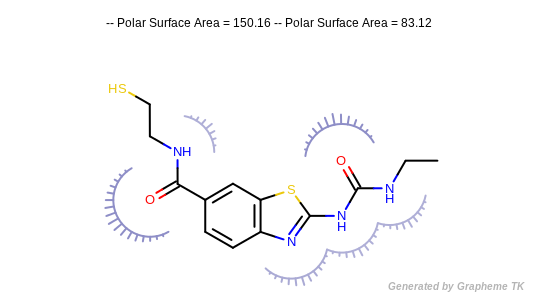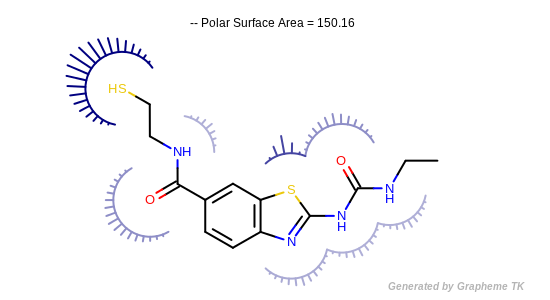OEGet2dPSA
bool OEGet2dPSA(const OEChem::OEMolBase &mol, float &psa, float *atomPSA=0,
bool SandP=false)
Returns the topological polar surface area for a given molecule as
described in the Polar Surface Area section. The
SandP parameter controls whether sulfur and phosphorus should be
counted towards the total surface area.
See example in Figure: Example of depicting the atom contributions of
the polar surface area.
Warning
TPSA values are mildly sensitive to the protonation state of a molecule.
The atomPSA parameter can be used to retrieve the contribution
of each atom to the total polar surface area as shown in
Listing 1.
Listing 1: Example of retrieving individual atom contributions to PSA
// declare an array for atom values
float * atomPSA = new float[mol.GetMaxAtomIdx()];
float psa;
OEGet2dPSA(mol, psa, atomPSA);
std::cout << "PSA = " << psa << std::endl;
for (OEIter<OEAtomBase> atom=mol.GetAtoms();atom;++atom)
{
unsigned int idx = atom->GetIdx();
std::cout << idx << " " << atomPSA[idx] << std::endl;
}
// clean up
delete [] atomPSA;

Example of depicting the atom contributions of the polar surface area (ignoring S and P atoms)
(Darker colors and longer spikes indicate larger PSA atom contributions)

Example of depicting the atom contributions of the polar surface area (considering S and P atoms)
(Darker colors and longer spikes indicate larger PSA atom contributions)
See also
The Python script that visualizes the polar surface area of a molecule can be downloaded from the OpenEye Python Cookbook
See also
Polar Surface Area section